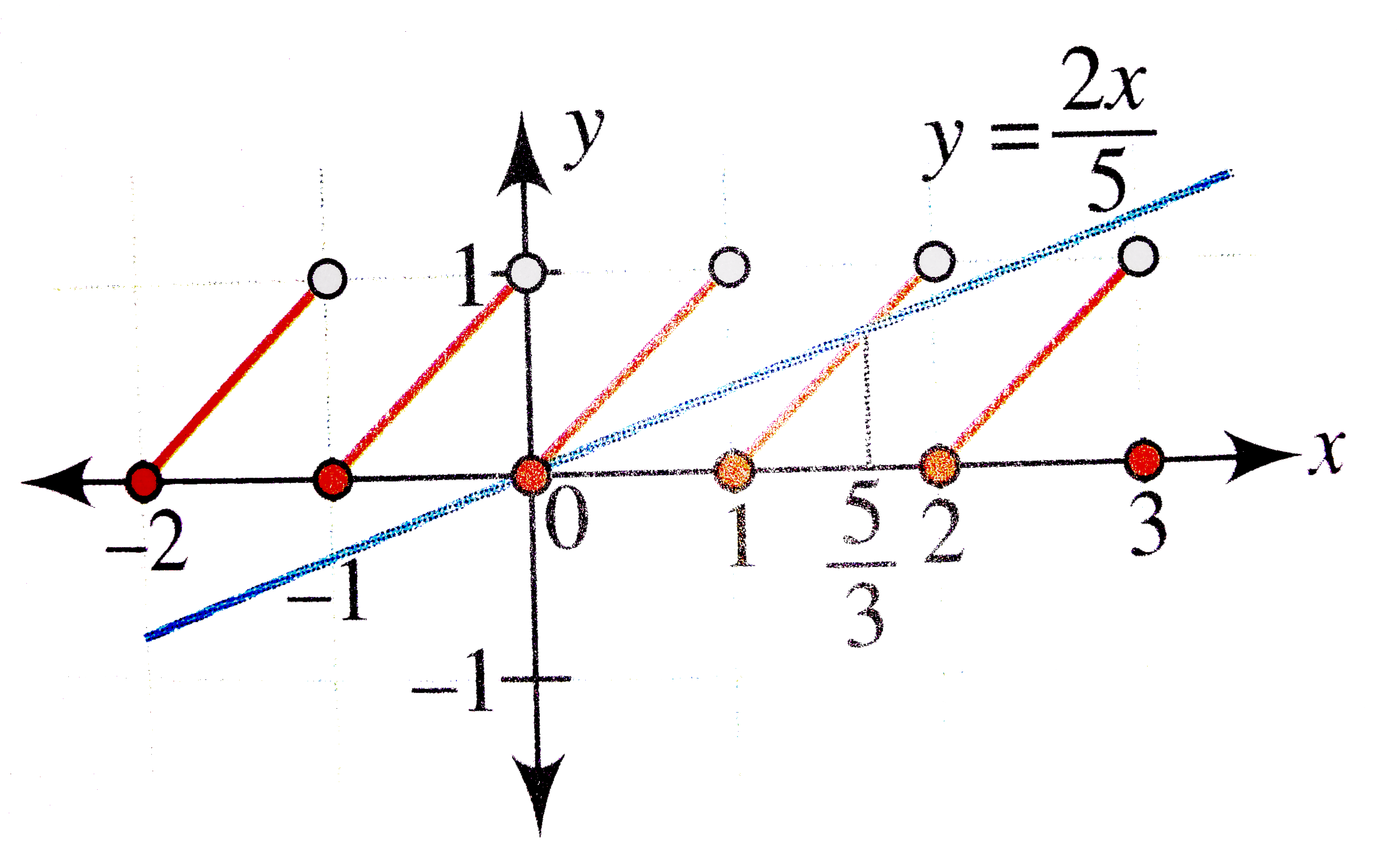Solve : 4{x}=x+[x](where [⋅] denotes the greatest integer function and {⋅} denotes the fractional part function. Solution in Tamil
We have 4{x}=x+[x]
or 4{x}=x+x−{x}
or 5{x}=2x
or {x}=2x5
Now draw the graphs of y={x}andy=25x.

From the graph, one of the solutions is x=0.
Other solution occurs where 25x=x−1
or x=53
Topper's Solved these Questions
- GRAPHS OF ELEMENTARY FUNCTIONS BOOK - CENGAGECHAPTER - GRAPHS OF ELEMENTARY FUNCTIONS EXERCISE - Exercise
34 Videos
- GRAPHS OF POLYNOMIAL AND RATIONAL FUNCTIONSBOOK - CENGAGECHAPTER - GRAPHS OF POLYNOMIAL AND RATIONAL FUNCTIONSEXERCISE - Exercises
4 Videos
- GRAPHS OF TRIGONOMETRIC FUNCTIONSBOOK - CENGAGECHAPTER - GRAPHS OF TRIGONOMETRIC FUNCTIONSEXERCISE - Exercise
22 Videos
Similar Questions
Draw the graph of y=1(1/x).
View SolutionSketch the graph of an example of a rational function f that satisfies all the given conditions.
(i) f(0)=0,f(1),limx→∞f(x)=0,f is odd
(ii) limx→0+f(x)=∞,limx→0−f(x)=−∞,limx→∞f(x)=1,limx→−∞f(x)=1
(iii) limx→−2f(x)=∞,limx→−∞f(x)=3,limx→∞f(x)=3,f(0)=0
View SolutionDraw the graph of y= cosec 2x−cot2x. Is f(x) periodic ? If yes, what is its fundamental period ?
View SolutionSolve 1x+1[2x]={x}+13where [.] denotes the greatest integers function and{.} denotes fractional part function.
View SolutionIf F(x)=sinπ[x]{x} then F(x) is (where {.} denotes fractional part function and [.] denotes greatest integer function and sgn(x) is a signum function)
View SolutionSolve : 4{x}=x+[x](where [⋅] denotes the greatest integer function and {⋅} denotes the fractional part function.
View SolutionSolve : [x]2=x+2{x}, where [.] and {.} denote the greatest integer and the fractional part functions, respectively.
View SolutionSolve the equation [x]{x}=x, where [] and {} denote the greatest integer function and fractional part, respectively.
View SolutionSolve 2[x]=x+{x},where[.]and{} denote the greatest integer function and the fractional part function, respectively.
View SolutionSolve : 4{x}=x+[x](where [⋅] denotes the greatest integer function and {⋅} denotes the fractional part function.
View SolutionSolve : [x]2=x+2{x}, where [.] and {.} denote the greatest integer and the fractional part functions, respectively.
View SolutionThe function f(x)={x}sin(π[x]), where [.] denotes the greatest integer function and {.} is the fraction part function , is discontinuous at
View SolutionSolve the equation [x]{x}=x, where [] and {} denote the greatest integer function and fractional part, respectively.
View SolutionSolve 1x+1[2x]={x}+13where [.] denotes the greatest integers function and{.} denotes fractional part function.
View SolutionIf F(x)=sinπ[x]{x} then F(x) is (where {.} denotes fractional part function and [.] denotes greatest integer function and sgn(x) is a signum function)
View Solution
